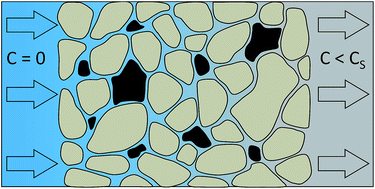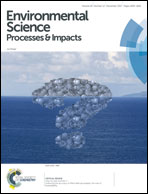Laboratory study of mass transfer from diluted bitumen trapped in gravel
Abstract
Diluted bitumen (dilbit) spilled to rivers has the potential to sink and become trapped in coarse bed sediments. Hyporheic flow through the river bed can then lead to the dissolution of hydrocarbons from this trapped oil, and subsequent risks to water quality and aquatic life. It is important to understand the concentrations of dissolved hydrocarbons in water, relative to aqueous solubility, that may result from mass transfer under these conditions, particularly under conditions where coarse sediments lead to faster hyporheic flow that could promote rate-limited mass transfer conditions. In this study, the dissolution of dilbit (Cold Lake Blend) trapped in gravel was measured using one-dimensional columns at flow rates representative of fast hyporheic flow. Dissolved concentrations in the column effluent were found to be less than 20% of effective solubility (equilibrium) concentrations and decreased with increasing flow rate, indicative of rate-limited conditions. These results show that risks posed by the contamination of gravel-bedded rivers by trapped dilbit may be lower, but persist for a longer period of time, than those estimated assuming dissolution at concentrations near solubility limits.



 Please wait while we load your content...
Please wait while we load your content...